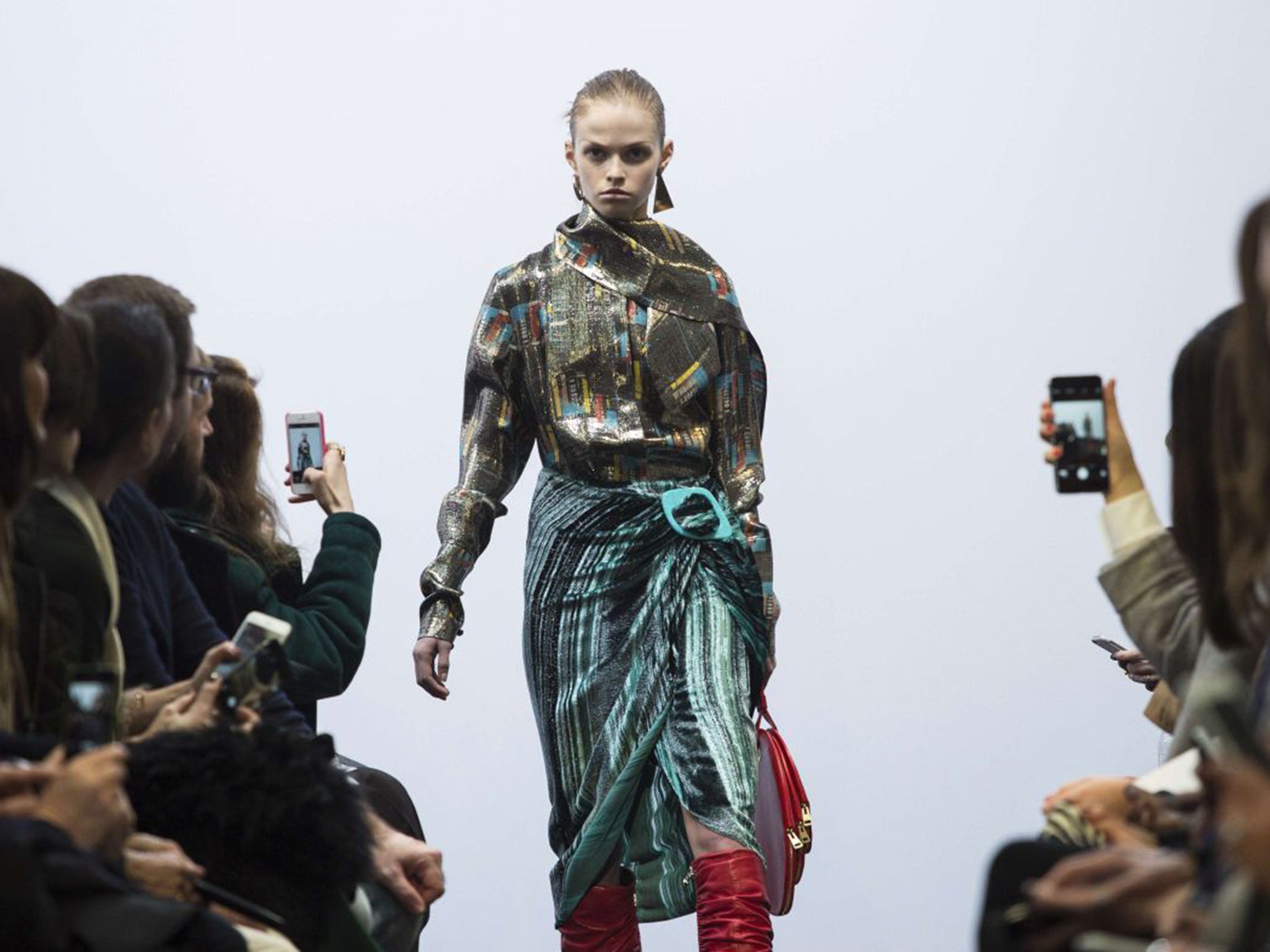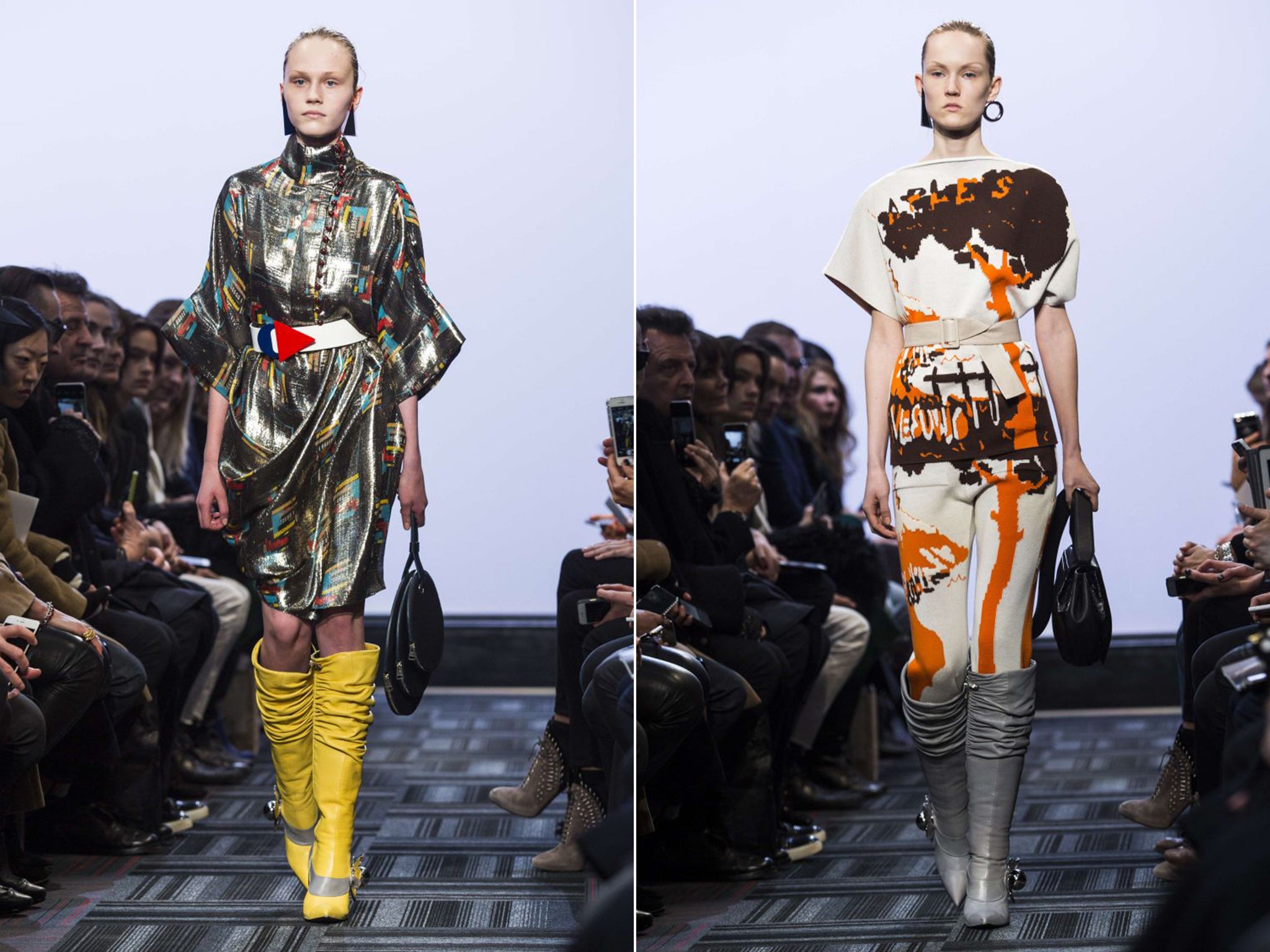Dreams of empire at London Fashion Week: New generation of young designers fights it out
Fashion Editor Alexander Fury assesses the ambition on display in the autumn/winter 2015 collections

Your support helps us to tell the story
From reproductive rights to climate change to Big Tech, The Independent is on the ground when the story is developing. Whether it's investigating the financials of Elon Musk's pro-Trump PAC or producing our latest documentary, 'The A Word', which shines a light on the American women fighting for reproductive rights, we know how important it is to parse out the facts from the messaging.
At such a critical moment in US history, we need reporters on the ground. Your donation allows us to keep sending journalists to speak to both sides of the story.
The Independent is trusted by Americans across the entire political spectrum. And unlike many other quality news outlets, we choose not to lock Americans out of our reporting and analysis with paywalls. We believe quality journalism should be available to everyone, paid for by those who can afford it.
Your support makes all the difference.It has been a bit unsavoury to talk about imperialism in Britain for a while – after a few centuries of pillaging, empire-building went out of favour around the end of the Second World War.
Ironically, the only place it dominates today is in fashion, where every designer worth their mettle seems eager to establish a fiefdom and plant a flag in a prime piece of real estate.
Mayfair’s Mount Street is British fashion’s chief battleground, its hoardings trumpeting unexpectedly young designer names and jostling empires. Christopher Kane opened his first flagship there last week, alongside Roksanda and the shoe designer Nicholas Kirkwood. Erdem Moralioglu, who creates intricate, inoffensive dresses and won British Fashion Awards designer of the year in 2014, is setting up shop around the corner on South Audley Street.
All have ambition and drive. Lots have talent. Some have backing: LVMH owns part of Kirkwood, Kering a majority of Kane. That enables them to expand frontiers and amass armouries to fight rivals. However, as in any battle, it’s the inspired generals that corral their troops most successfully. You see Simone Rocha’s collections and are struck by how quickly she has established an unmistakable handwriting.

Originality is relative. It can simply mean doing something different to the rest. That is why Emilia Wickstead is making a bigger splash than she should: she’s doing something that other London designers aren’t. Arguably, that’s because tartan ballgowns aren’t a great idea. But Wickstead knows this stuff will help her build a bankable identity. She has her own store already, filled with well-behaved mid-calf skirts and wrap coats, but she opted to move away from the maddening crowds of thrusting young designers to Sloane Street. That’s where her customers are, I suspect – pedigreed young women and coiffed matriarchs who don’t trust all that “fashion” stuff. It’s definitely where the (old) money is.
The J W Anderson label isn’t exactly new money, but Jonathan Anderson is fixated on the perpetual renewal of contemporary fashion. He is unfazed by the daunting schedule of pre-collections or the demands of the Spanish house Loewe, for whom he acts as creative director. In the past 12 months he has created no fewer than 10 collections. He has also co-ordinated the opening of Loewe’s first stateside store, which has involved shifting a 16th-century Spanish building brick by brick to Miami. That sounds very conquistador – and, of all London’s little emperors, Anderson is the most driven and possibly the least grounded. He has had grand designs from the get-go. He got going and got there.

That should be applauded, but there’s something fearsome about the ambition of Anderson. He talks the talk so well, you wonder if he can convince you of stuff you would otherwise wrinkle your nose at. For instance, that his latest autumn/winter 2015 collection consisted of something more taxing than straight Eighties redux, a sartorial equivalent of Anderson uprooting that Renaissance building and plonking it in 21st-century America. Indeed, the Eighties have been revived before and with such vengeance that even Anderson’s passionate iteration seemed a bit old hat. But it was passionate, and expertly realised, from the scrunch-down boots to the lurex jumpers and metallic earrings.
There was a bloody-mindedness to this collection that was compelling. Anderson wants the world to look ugly come winter; ugly and old. That swamped some of his less decade-derivative ideas, such as billowing lappets and odd scrunches of fabric folded around the body.
Printed lamé and leather in virulent aubergine and lipstick-red tend to do that.
However, this look isn’t something you immediately associate with Anderson and his empire. As provocation, it jabbed at a few buttons and hit some. But as a means of furthering his fashion forward-march, it missed the mark.
Join our commenting forum
Join thought-provoking conversations, follow other Independent readers and see their replies
Comments